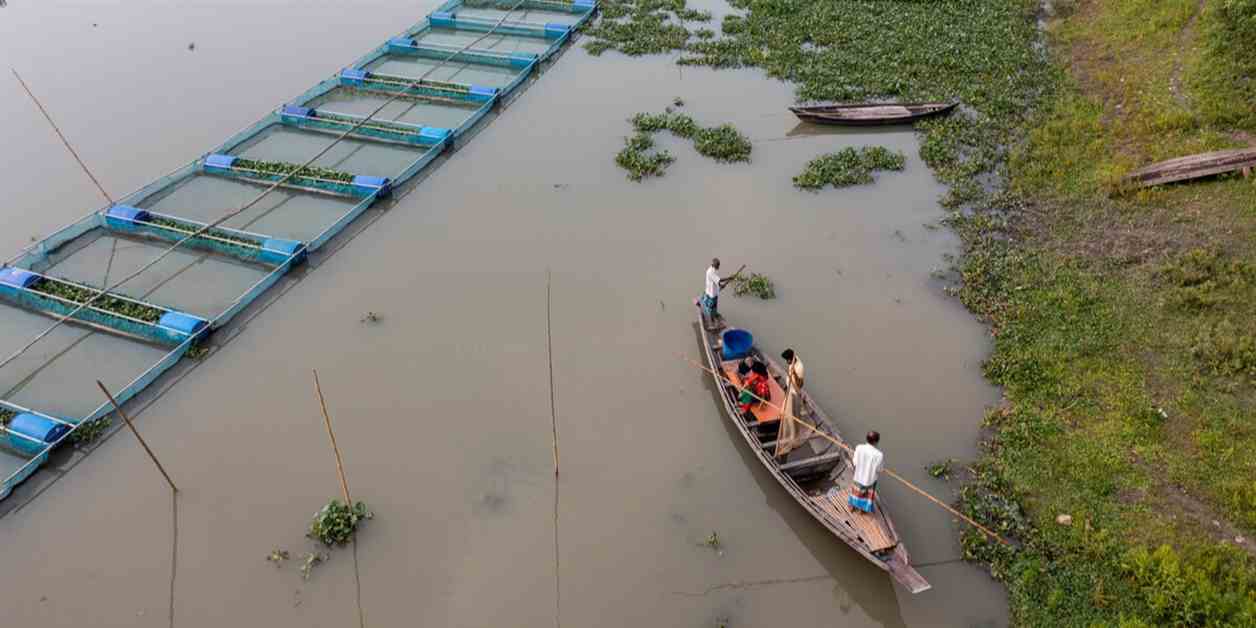Rapport de la FAO: Global Fish and Aquaculture Production Reaches a New Record
Rome/San José (Costa Rica) – Global fish and aquaculture production has reached an unprecedented level, with aquaculture animal production surpassing capture fishing for the first time, according to a new report from the United Nations Food and Agriculture Organization (FAO) released today. The 2024 edition of The State of World Fisheries and Aquaculture states that global fish and aquaculture production reached 223.2 million tonnes in 2022, a 4.4 percent increase from 2020. It included 185.4 million tonnes of aquatic animals and 37.8 million tonnes of algae.
“The FAO welcomes the significant achievements so far, but further adaptive and transformative measures are needed to strengthen the efficiency, inclusiveness, resilience, and sustainability of aquatic food systems and consolidate their role in combating food insecurity, poverty reduction, and sustainable governance,” said FAO Director-General Qu Dongyu. “This is why the FAO advocates for blue transformation, in order to meet the requirements for improvements in production, nutrition, environment, and living conditions, leaving no one behind.”
The report will be officially presented at the high-level ocean action event titled “Immersed in Change,” to be held in San José, Costa Rica.
**Aquaculture Achieves Record Production**
In 2022, for the first time in history, aquaculture became the leading producer of aquatic animals, surpassing capture fishing. Global aquaculture production reached the unprecedented level of 130.9 million tonnes, with 94.4 million tonnes of aquatic animals, accounting for 51 percent of the total animal production. The growth of aquaculture shows that this sector can further contribute to meeting the growing global demand for aquatic foods. However, its future expansion and intensification must prioritize sustainability and benefit regions and populations most in need.
Currently, aquaculture is dominated by a handful of countries, with 10 – China, Indonesia, India, Vietnam, Bangladesh, the Philippines, South Korea, Norway, Egypt, and Chile – producing more than 89.8 percent of the total. Nevertheless, many low-income countries in Africa and Asia are not realizing their full potential. Targeted policies, technology transfer, capacity building, and responsible investment are crucial to promote sustainable aquaculture where it is most needed, especially in Africa.
**Global Consumption of Aquatic Foods on the Rise**
The record production of aquatic foods highlights the sector’s potential in combating food insecurity and malnutrition. Global apparent consumption of animal-sourced aquatic foods reached 162.5 million tonnes in 2021. It increased almost twice as fast as the world population since 1961, with the annual global consumption per capita rising from 9.1 kilograms in 1961 to 20.7 kilograms in 2022.
**Conclusion**
In conclusion, the FAO report on global fish and aquaculture production sets a new milestone in the sector, emphasizing the need for sustainable practices, inclusive growth, and equitable distribution to address food security and nutrition challenges worldwide. As the world’s population continues to grow, the demand for aquatic foods is expected to rise, necessitating urgent measures to ensure the sector’s resilience, efficiency, and contribution to eradicating hunger, malnutrition, and poverty.
For more detailed information and statistics, the full FAO report can be accessed for a comprehensive analysis of the state and trends of fisheries and aquaculture worldwide.




